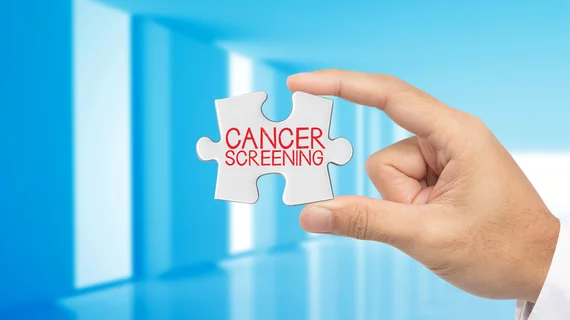Souped-up primary care model boosts timely follow-up after abnormal cancer screening results
A “multilevel” primary care intervention involving electronic health record reminders, patient outreach and navigation helped improve timely follow-up for overdue abnormal cancer screenings results, according to research published Tuesday.
Scientists tested this innovation via a randomized clinical trial conducted across 44 primary care practices spanning three hospital networks. Cancer types included breast, lung, cervical and colorectal, with the study tracking follow-up within 120 days after an abnormal screening test, experts detailed in JAMA [1].
The intervention appears to have paid off. About 31.4% of patients exposed to EHR reminders, outreach and navigation services completed the task compared to just 22.9% in the group who received standard care.
“Systems-based outreach in primary care settings can improve the timely follow-up of abnormal cancer screening results, but gaps in follow-up care need to be addressed if the full benefits of preventive cancer screening are to be realized,” lead author Steven J. Atlas, MD, MPH, a primary care physician with Massachusetts General Hospital, and co-authors concluded.
Investigators deployed automated algorithms, developed using EHR data, to recommend follow-up actions and timing after abnormal screening results. They randomly assigned patients to 1 of 4 groups:
- The typical care approach after an abnormal screening.
- Screening reminder in the EHR: Patients and primary care docs received reminders identifying the type of abnormal test result and recommended follow-up. Both could view them any time they accessed the record, with the reminder closing once patients completed follow-up.
- EHR reminders plus patient outreach: Those remaining overdue for follow-up after two weeks received a reminder letter via the patient portal or snail mail. If the situation remained unresolved at four weeks, they then received a reminder phone call from study staff informing them of the result and providing info to schedule their next visit.
- EHR reminders, outreach and navigation: Patients received the same interventions as Nos. 2 and 3, except a navigator, instead, made the four-week phone call, assessing social barriers to care across nine different domains. Those included housing and food insecurity, ability to pay for basic utilities, family caregiving, transportation, education and employment. They then used an online network of verified social service programs to connect patients with available help in the community.
A total of nearly 12,000 patients were enrolled in the study, treated between 2020 and 2021 at Brigham and Women’s (15 practices), Dartmouth Health (12 practices), and Mass General (17 practices). Populations relevant to radiology included women age 40 to 80 with an abnormal mammogram (1,005 patients, 8%) and current or former smokers age 55 to 80 who underwent low-dose CT (134 patients, 1%). Across all cancer types, patients were a median age of 60, nearly 65% were women, 83% were white and 15% were insured through Medicaid.
About 22.9% of those in Group 1 (usual care) followed up on the results within 120 days. That’s compared to 22.7% in Group 2 (EHR reminders only), 31% in Group 3 (reminders and outreach), and 31.4% in Group 4 (reminders, outreach and navigation). Further analyses revealed that the primary benefit was seen in those with abnormal findings for cervical and colorectal cancer.
“The small number of patients enrolled with abnormal test results for lung cancer likely reflects low adoption of lung cancer screening in practice, perhaps with closer management of abnormal test results because of the relative novelty of recommendations for lung cancer screening,” Atlas et al. advised. “For both types of abnormal test results (breast cancer and those of other cancer types that are high risk), the intervention’s lack of benefit may reflect existing systems that promote follow-up. It is also uncertain if the intervention would have been more effective compared with usual care if implemented earlier (when a patient first becomes due for follow-up).”
Read much more about the results, including potential study limitations, in JAMA at the link below.

